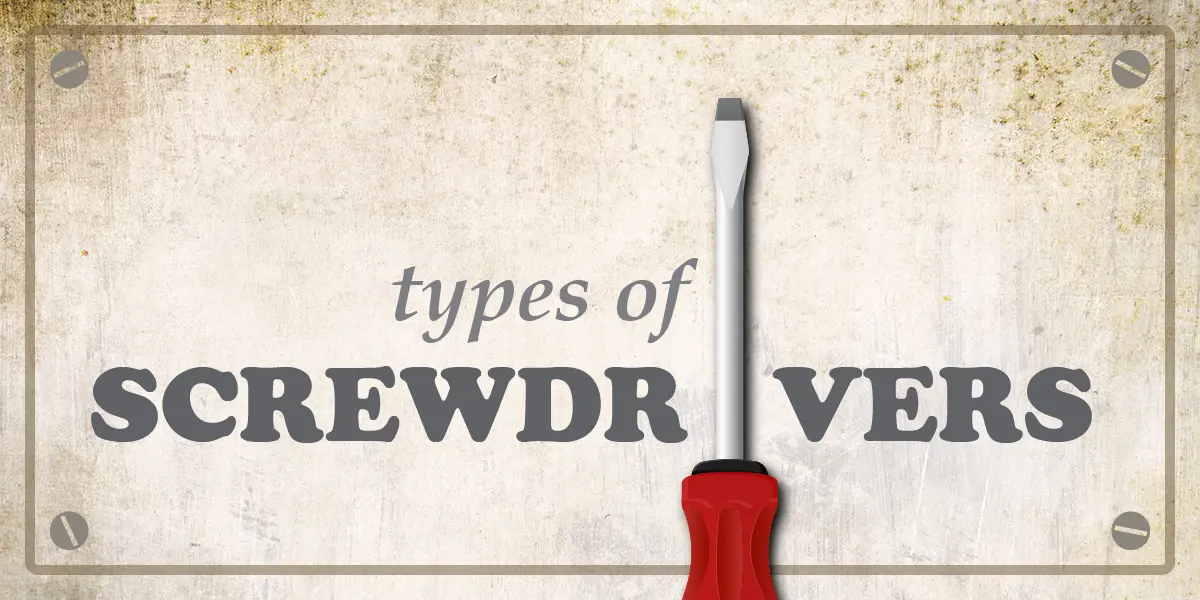The screwdriver dates back to the 15th century, invented to manipulate screws in armor and construction.
Those poor armored soldiers were screwed before they ever took the battlefield.
Today, the screwdriver is an indispensable tool in building, furniture making, machine manufacturing, and DIY projects. It’s often the first tool in a DIYer’s kit — not just a single screwdriver but different sizes and types for plumbing repairs, battery replacement, picture hanging, etc.
Common Screwdriver Types
Manual Screwdrivers
1. Flathead Screwdriver
- What it is: A screwdriver with a flat, straight blade.
- Best for: Screws with a single horizontal slot.
- Uses: Woodworking projects; opening cans of paint.
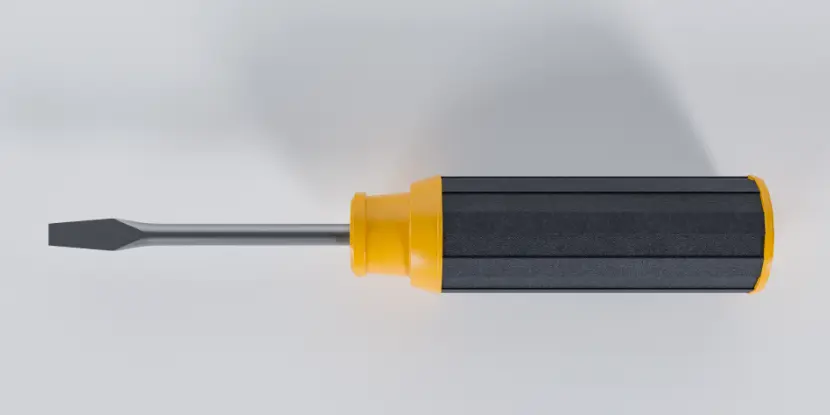
Flathead screwdrivers were the first screwdrivers invented and remain in use today.
2. Phillips Head Screwdriver
- What it is: One of the most common types, with a cross-shaped tip. It offers a better grip than a flathead screwdriver.
- Best for: Screws with a cross indentation.
- Uses: General-purpose household and construction tasks; assembling furniture or fixing appliances.
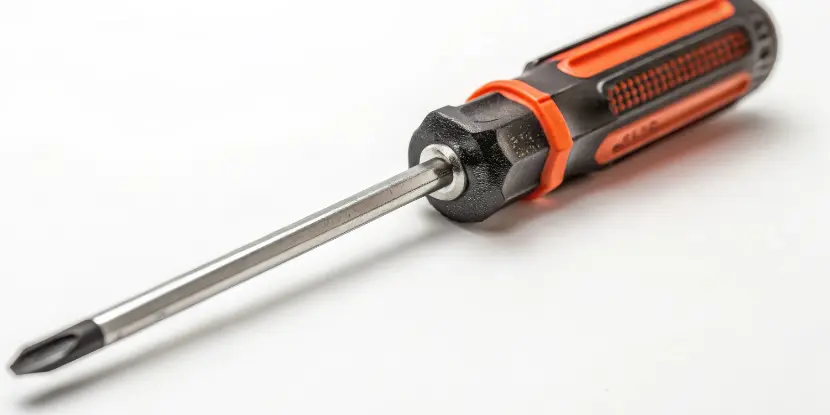
Phillips screwdrivers were the first big improvement on the standard flathead design, and dramatically reduced slippage under high torque.
3. Torx Screwdriver
- What it is: Features a star-shaped tip with six points. Offers an excellent grip, reducing the risk of slipping.
- Best for: Torx screws, commonly found in electronics and automobiles.
- Uses: Removing screws from phones, laptops, or automotive parts.
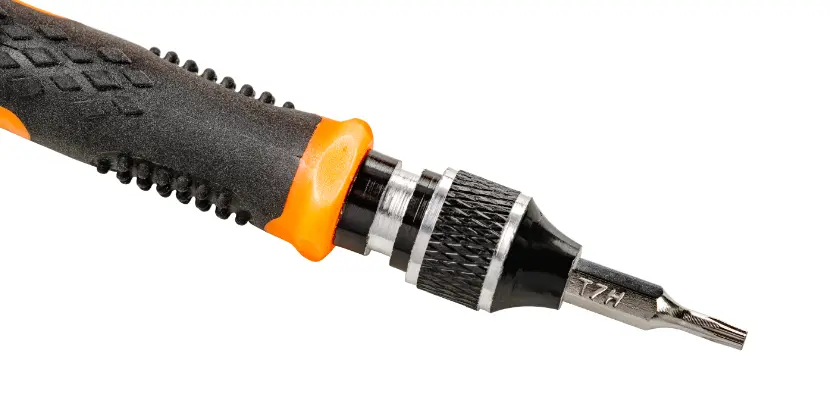
A torx screwdriver features a star-shaped tip that offers an excellent grip.
4. Precision Screwdriver
- What it is: A small screwdriver designed to work with tiny screws.
- Best for: Tasks requiring detailed, delicate work.
- Uses: Watches and eyeglass repair; small electronics; intricate DIY projects.
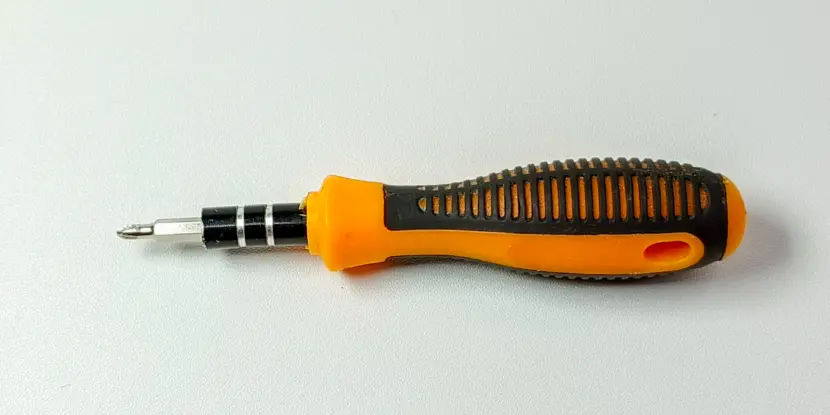
Precision screwdrivers are used for delicate tasks like repairing electronics.
5. Hex (Allen) Screwdriver
- What it is: A screwdriver with a hexagonal tip.
- Best for: Hexagonal screws, which are common in furniture assembly, and sockets.
- Uses: Tightening and loosening bolts in bicycles, flat-pack furniture, and door handles.
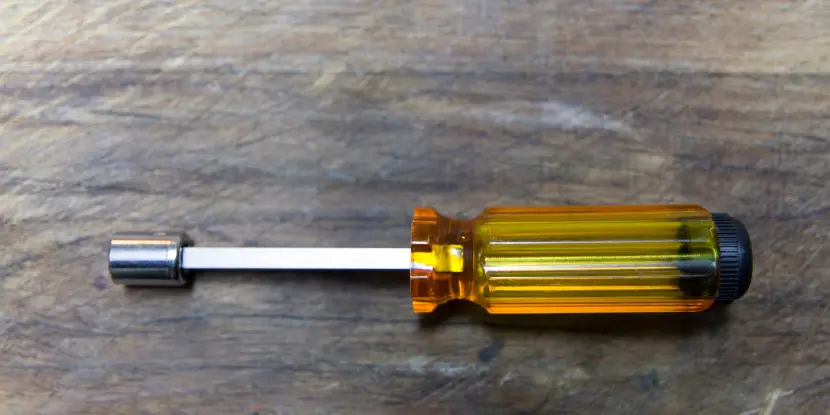
A hex screwdriver with a socket attachment.
6. Square (Robertson) Screwdriver
- What it is: Square-shaped tip designed for square-shaped screws.
- Best for: Robertson screws, which are popular in construction and woodworking.
- Uses: Projects involving heavy-duty, high-torque screws.
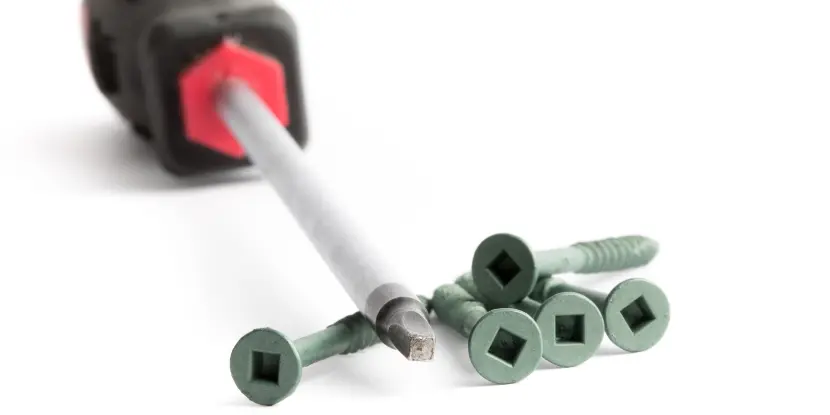
Robertson screwdrivers have square heads and are often used in construction.
7. Ratcheting Screwdriver
- What it is: A screwdriver with a built-in ratcheting mechanism that allows continuous rotation in one direction.
- Best for: Reducing wrist strain during repetitive tasks.
- Uses: Frequent screw-driving tasks in home repairs, furniture assembly, and DIY projects.
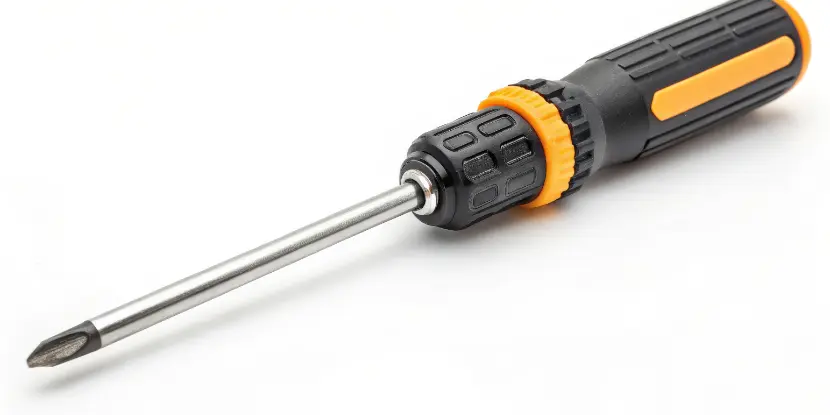
A ratcheting screwdriver allows continuous rotation in one direction.
8. Multi-bit Screwdriver
- What it is: A versatile tool with a single handle and multiple detachable heads or bits. It can be manual or powered.
- Best for: Projects requiring the flexibility to handle various screw designs.
- Uses: General household repairs, assembling furniture, and professional tasks.
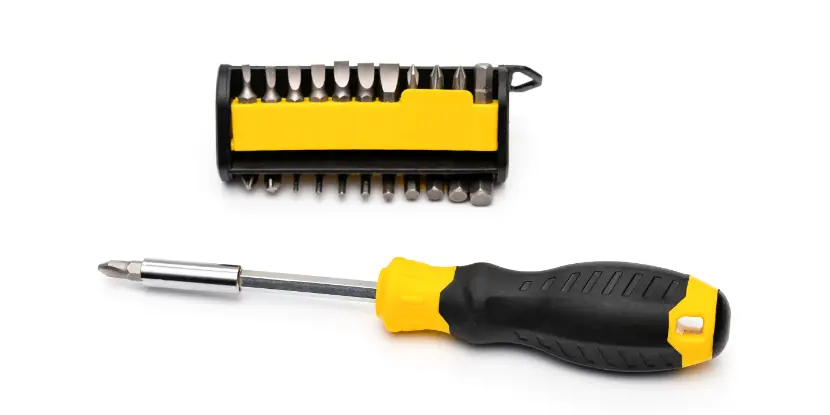
A multi-screwdriver replaces several kinds of screwdrivers with a single kit.
Power Screwdrivers
Power screwdrivers are time and energy savers for anyone working on larger or repetitive projects.
9. Cordless Electric Screwdriver
- What it is: A battery-powered screwdriver that eliminates manual effort.
- Best for: Quickly driving screws into a variety of materials.
- Uses: Assembly lines and high-volume projects; home maintenance where speed and efficiency matter.
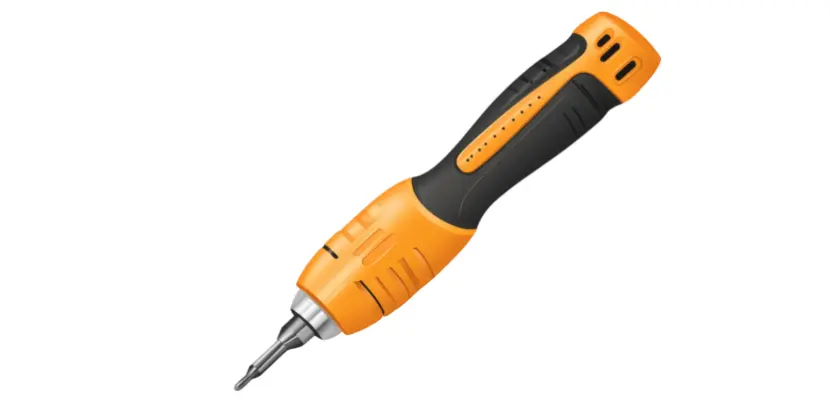
A battery-powered electric screwdriver eliminates most manual effort.
10. Impact Driver
- What it is: A powerful, high-torque tool used in heavy construction. It helps prevent stripping screws under high torque.
- Best for: Driving long screws or bolts into dense materials.
- Uses: Framing, building decks, or hanging drywall.
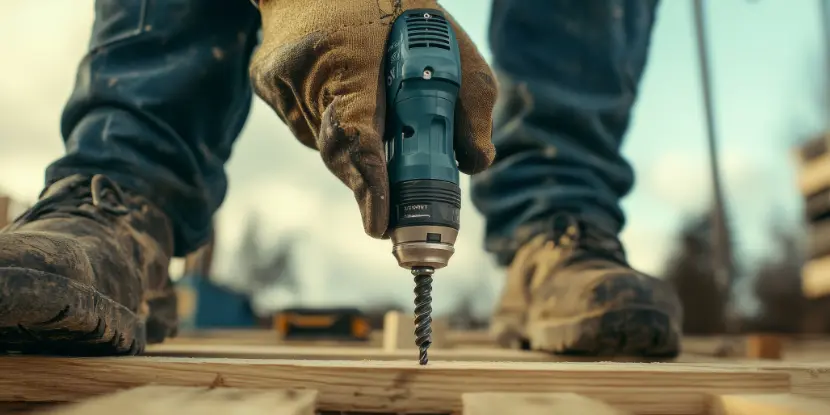
An impact driver is a powerful, high-torque tool used in heavy construction.
Choosing the Best Screwdriver for the Task
Now that you’re familiar with the most common types of screwdrivers, the next step is knowing how to choose the right one for the job.
Consider the Screw Type
Match the screwdriver head to the indentation type on the screw. Using the wrong type can damage the screw or the tool.
Evaluate the Material
- For tough materials like metal, higher torque screwdrivers such as Torx or impact drivers work best.
- For softer materials like wood, more basic options like a Phillips or flathead are sufficient.
Determine the Level of Precision Needed
- For intricate work, such as fixing eyeglasses or electronics, always opt for precision screwdrivers.
- Standard sizes will do for general repairs.
Manual vs. Power
- Manual screwdrivers are best for occasional light work or projects requiring control.
- Power screwdrivers are ideal for frequent use, repetitive tasks, or larger construction jobs.
Prioritize Quality
- Invest in screwdrivers made from durable materials like chrome vanadium steel.
- Ensure ergonomic handles are comfortable during prolonged use.
FAQs: Screwdriver Types
Q: What’s the difference between a Phillips and a flathead screwdriver?
A Phillips has a cross-shaped tip, while a flathead has a straight, flat tip.
Q: Why are Torx screwdrivers so popular?
They provide better grip and reduce slipping, making them ideal for precision and high-torque applications.
Q: Can I use a Phillips screwdriver for a flathead screw?
No, this can potentially damage both the screwdriver and the screw.
Q: Why should I choose a power screwdriver?
Power screwdrivers save time and effort, especially for repetitive or large-scale projects.
Q: Do I need all types of screwdrivers?
No, it depends on the projects you work on. For general-purpose use, a Phillips, flathead, and Torx should suffice.
Q: What’s the best screwdriver for assembling furniture?
A hex (Allen) screwdriver is most commonly needed for furniture assembly.
Q: Are screwdriver sets worth it?
Yes, if you frequently undertake various projects, having a set ensures you always have the right tool on hand.
Q: Can screwdrivers be used for anything other than screws?
Yes! Flathead screwdrivers, for instance, are often used as makeshift tools for prying open paint cans or removing clips.

